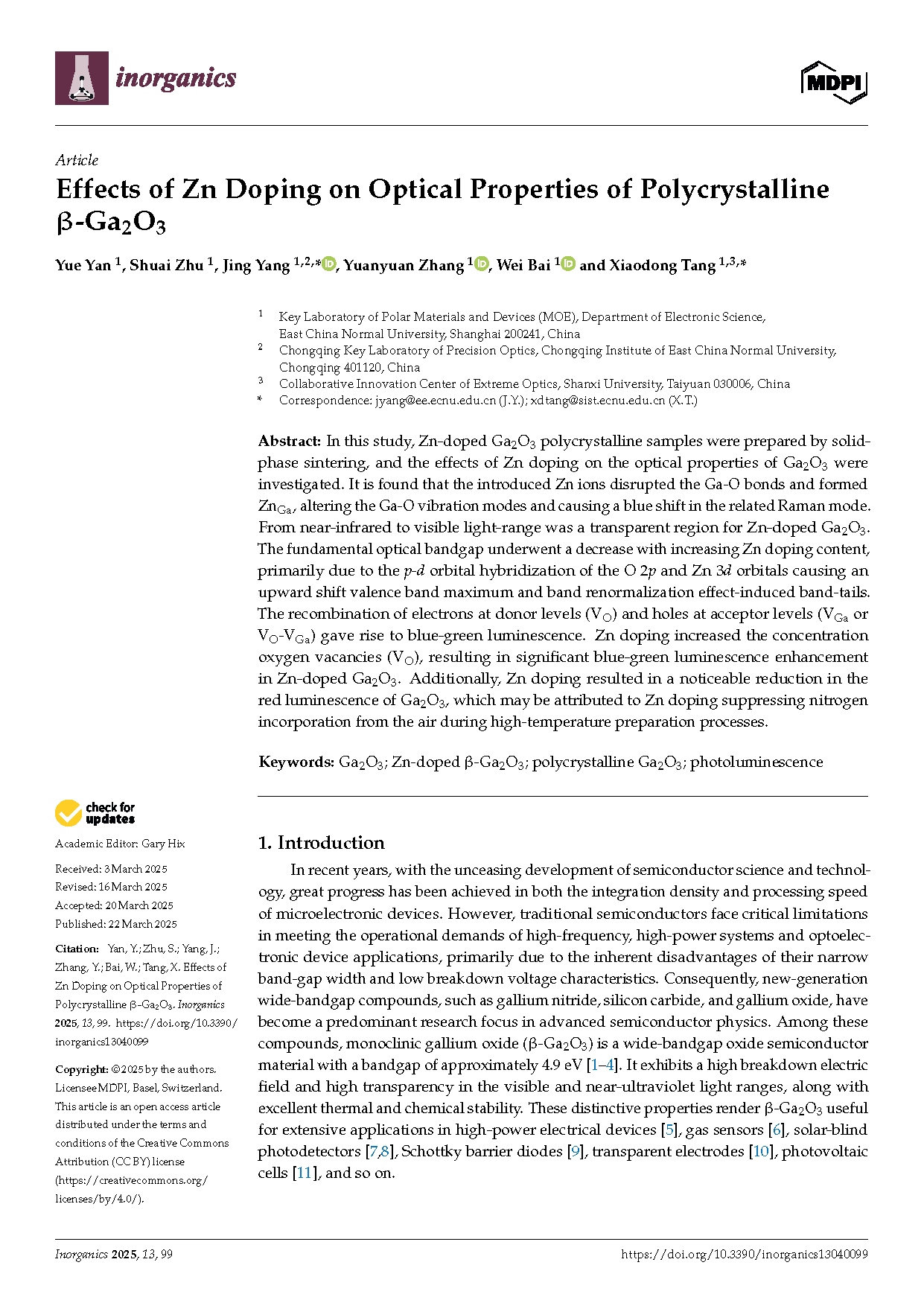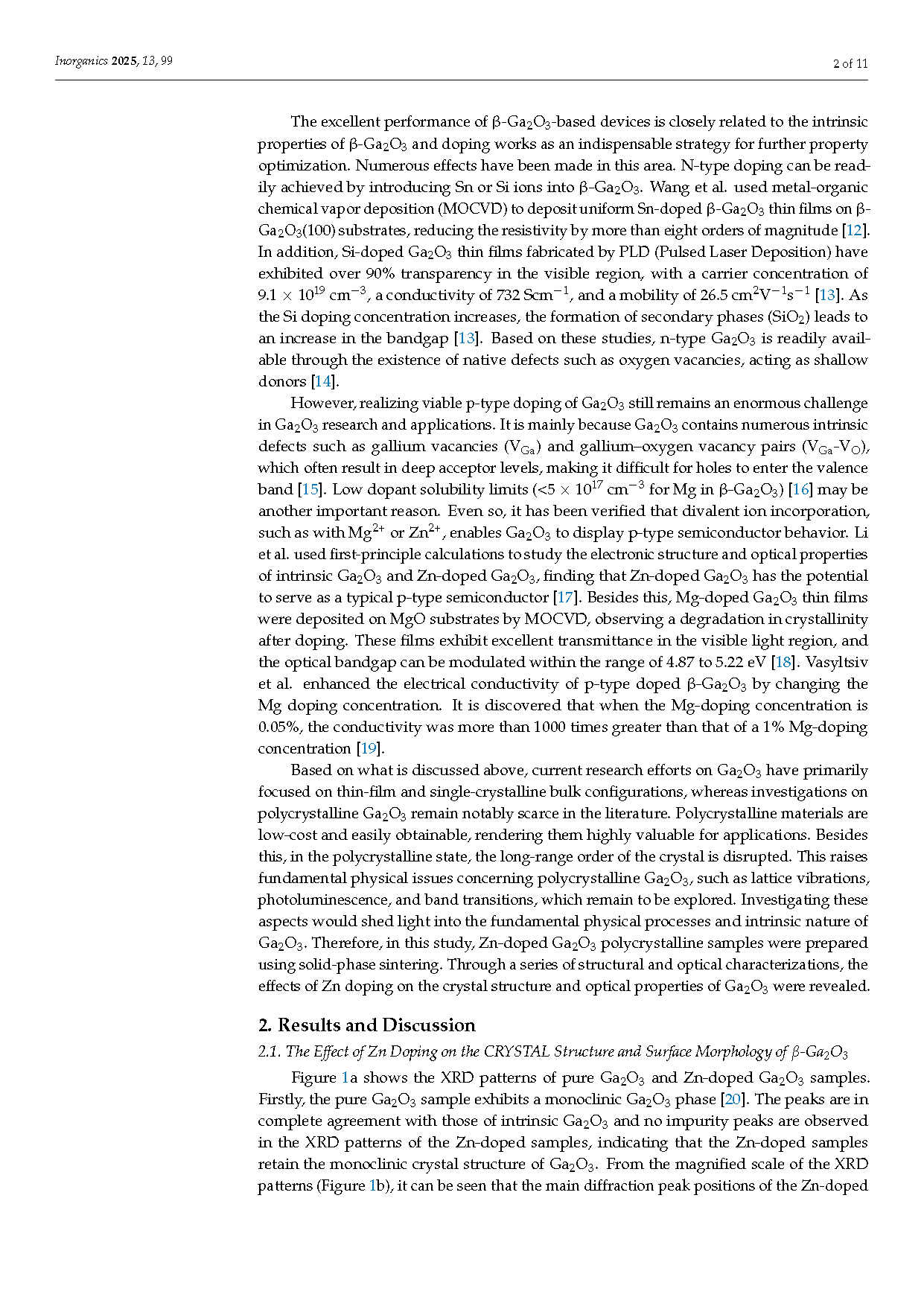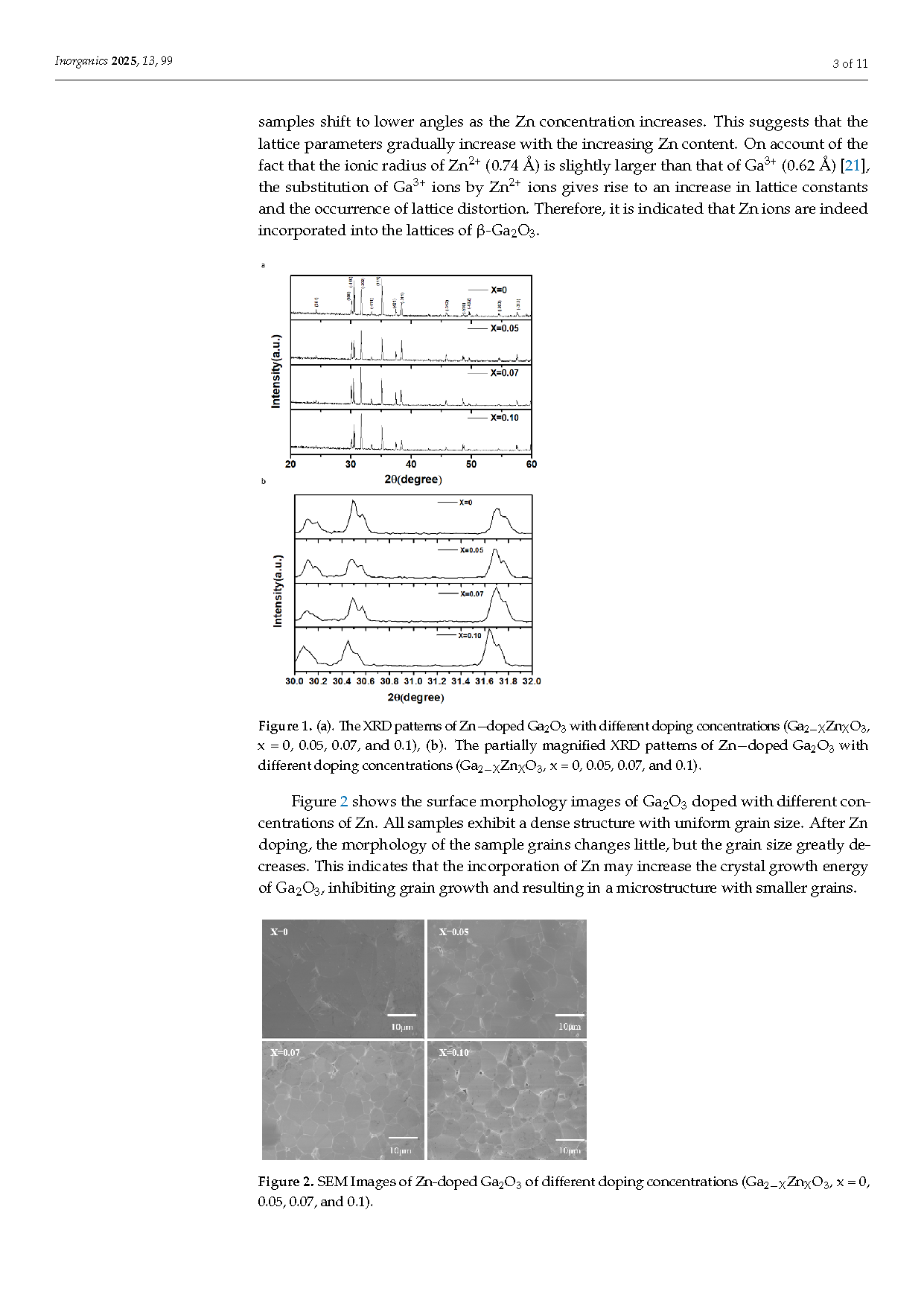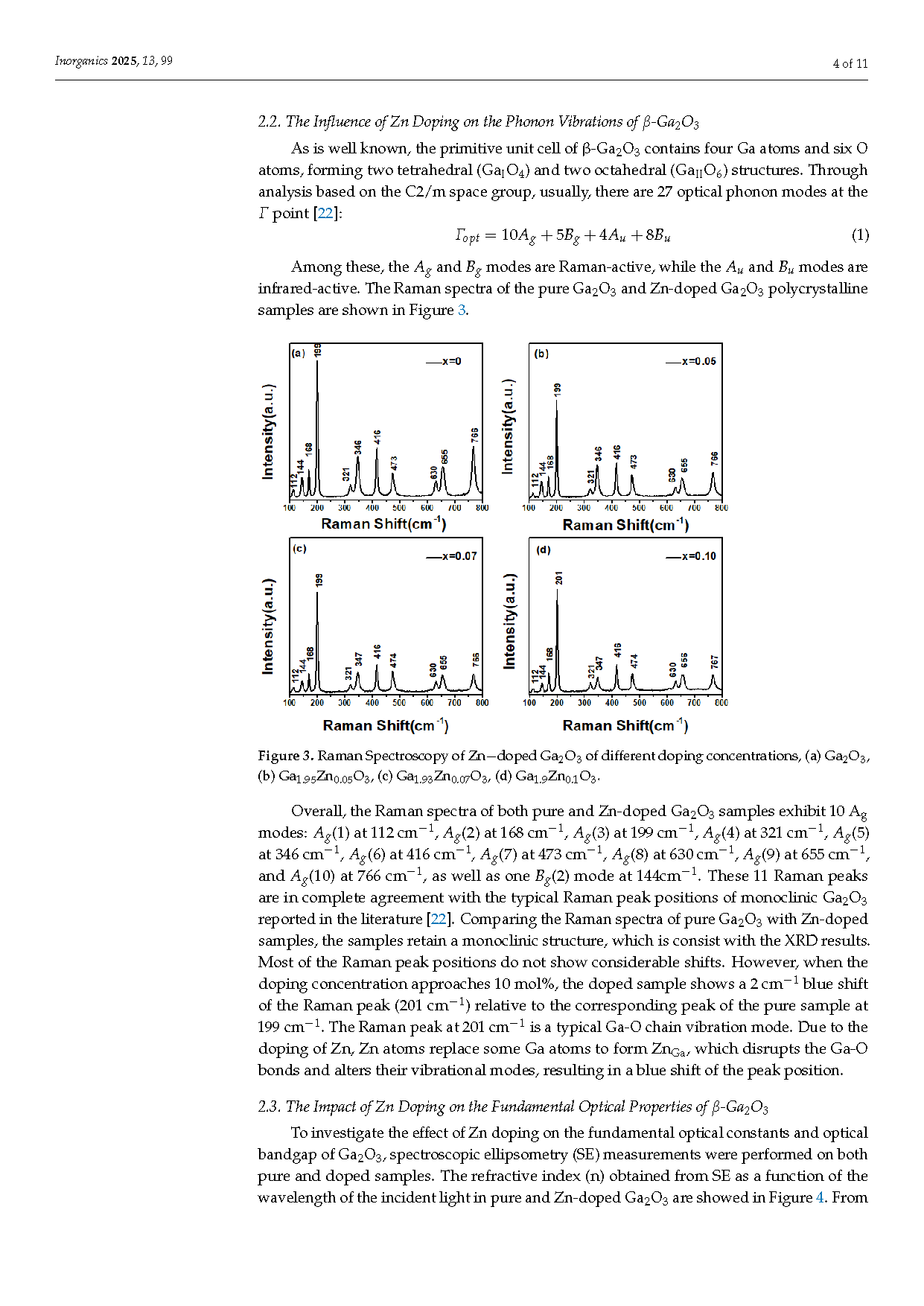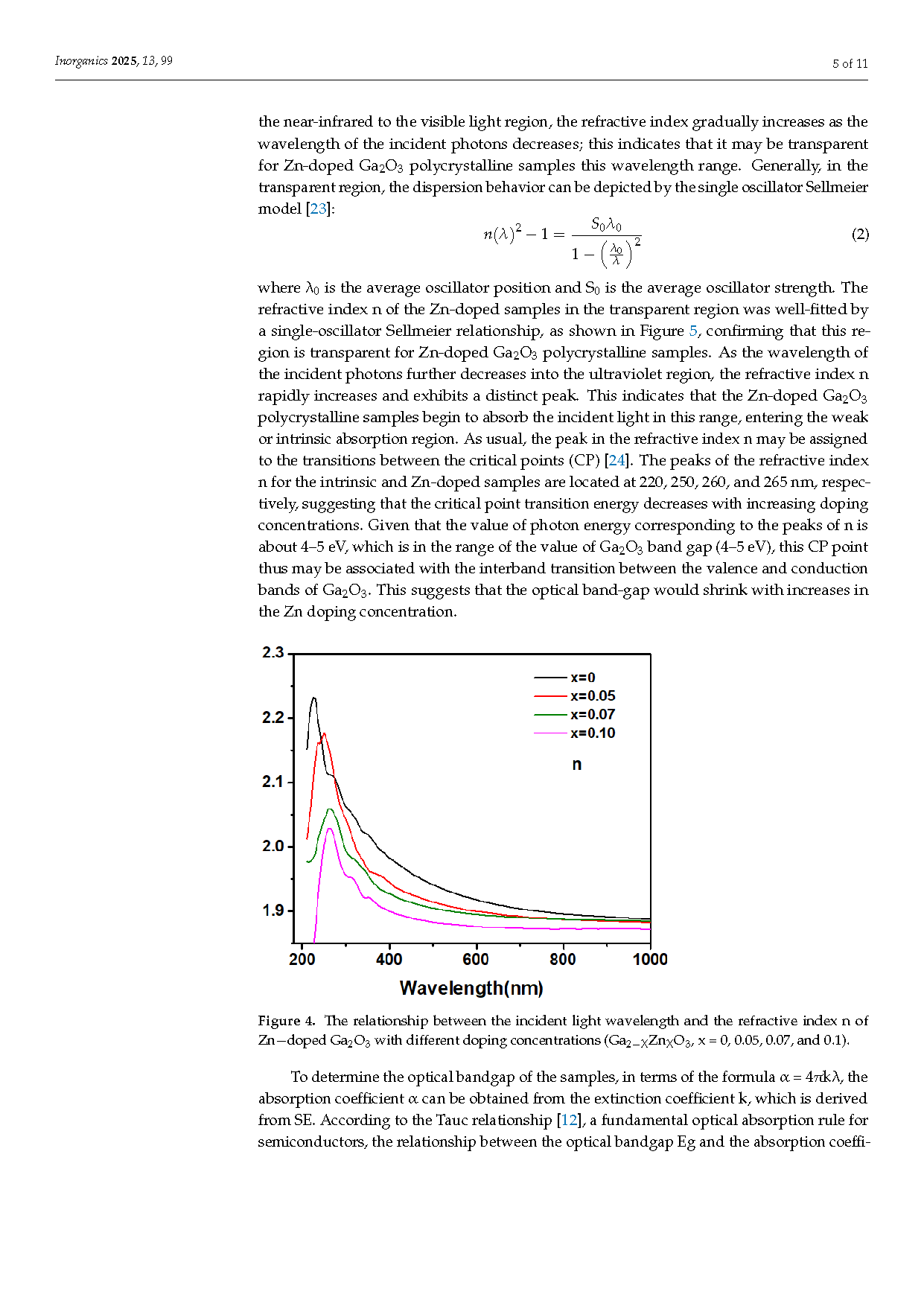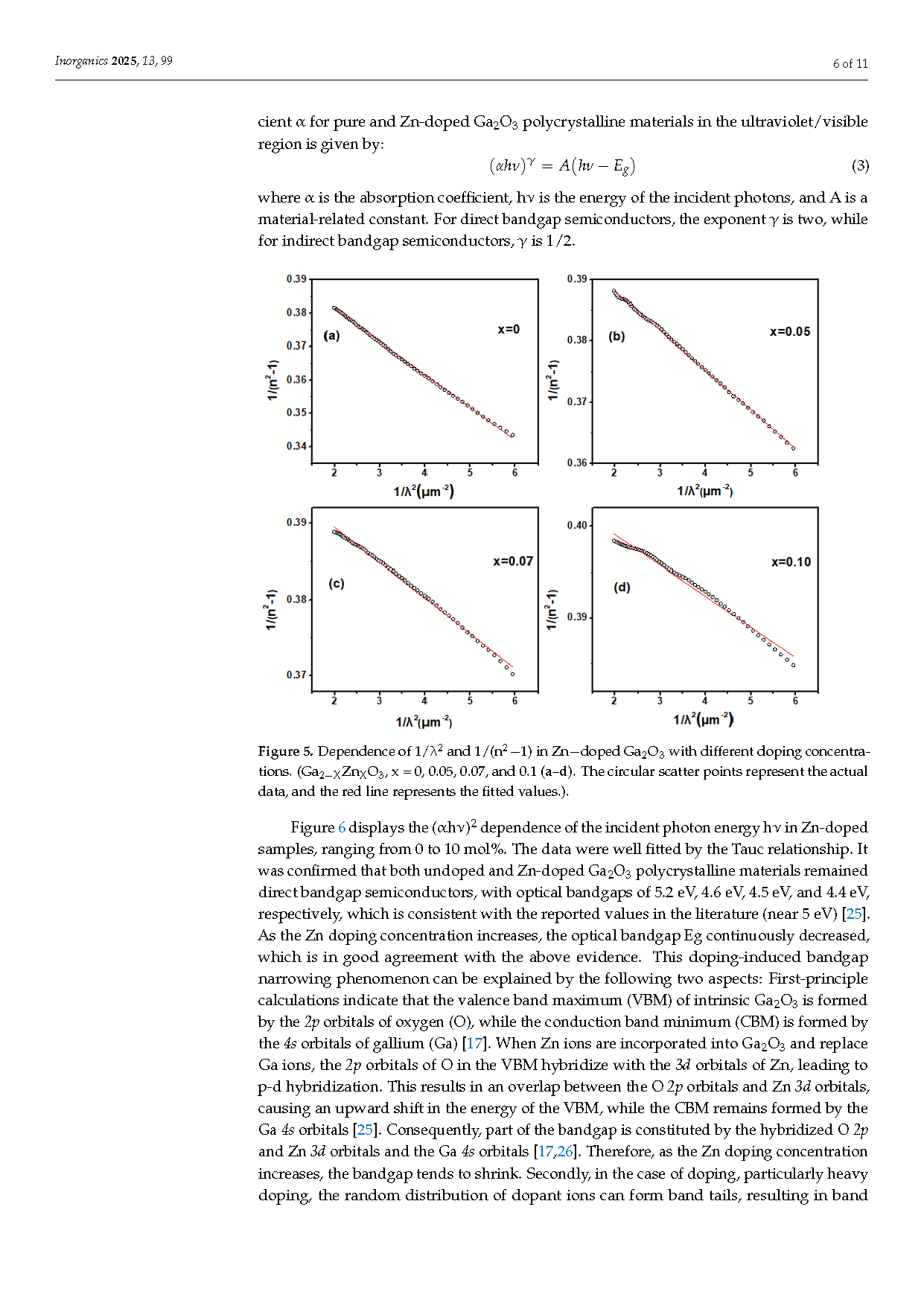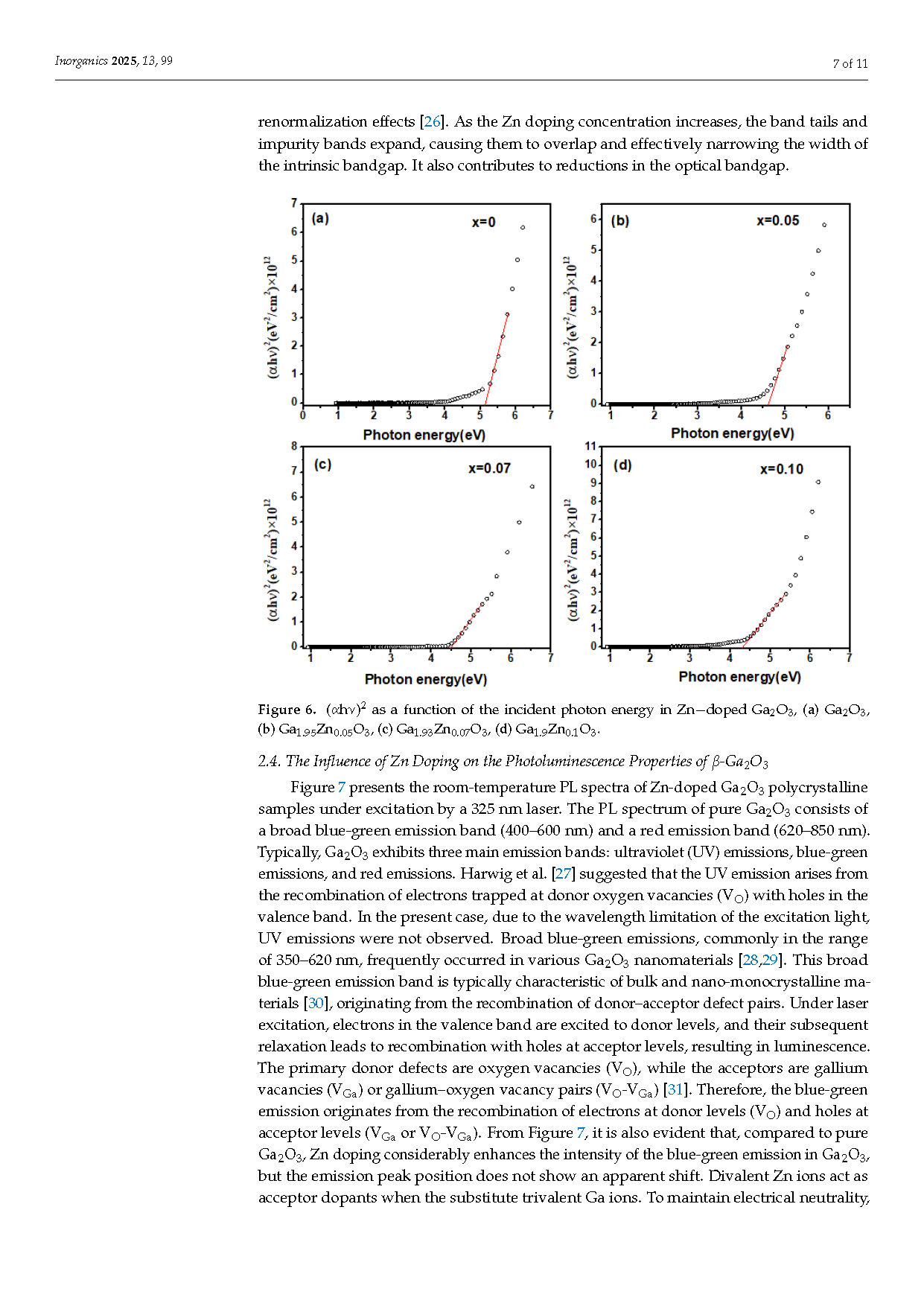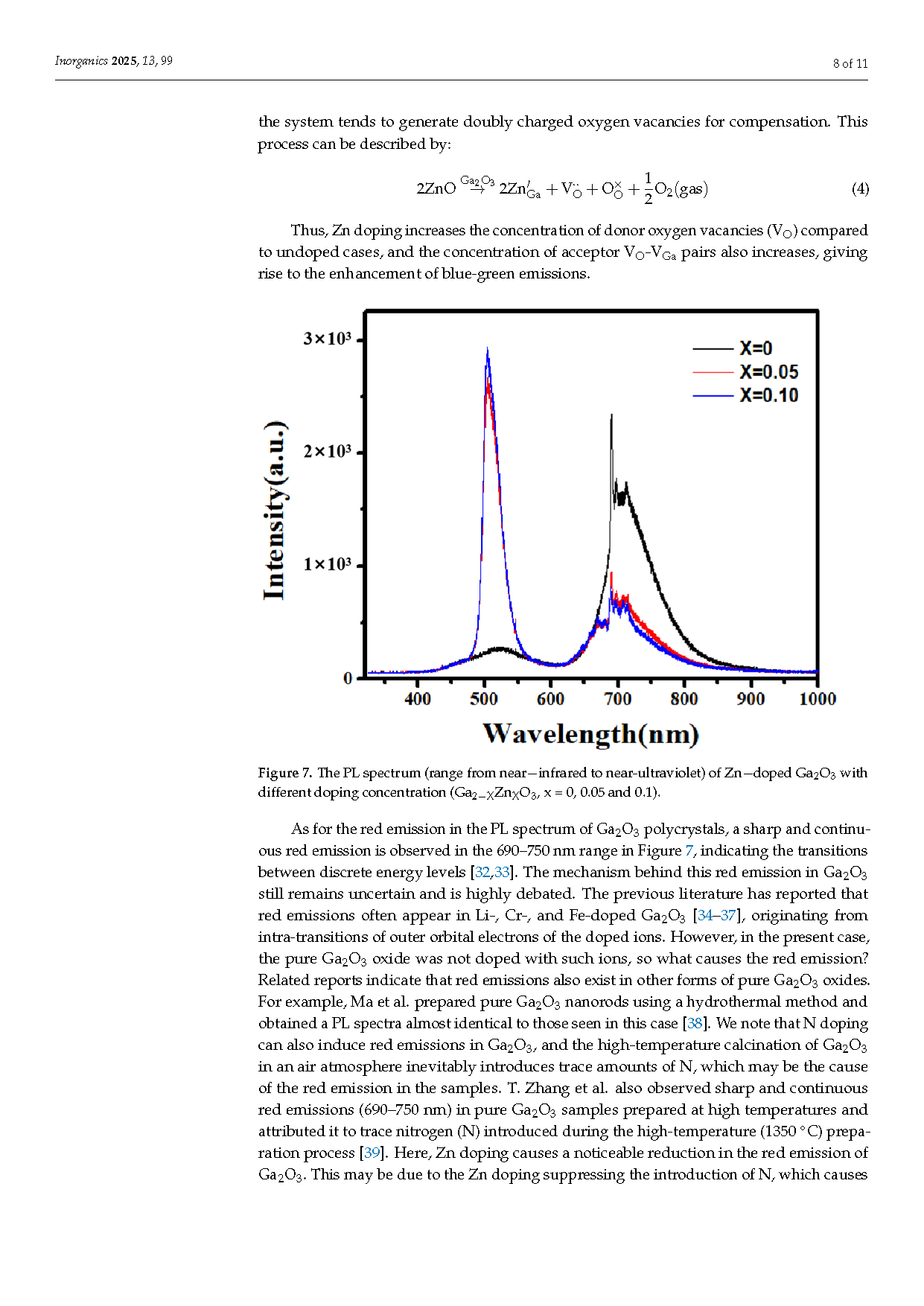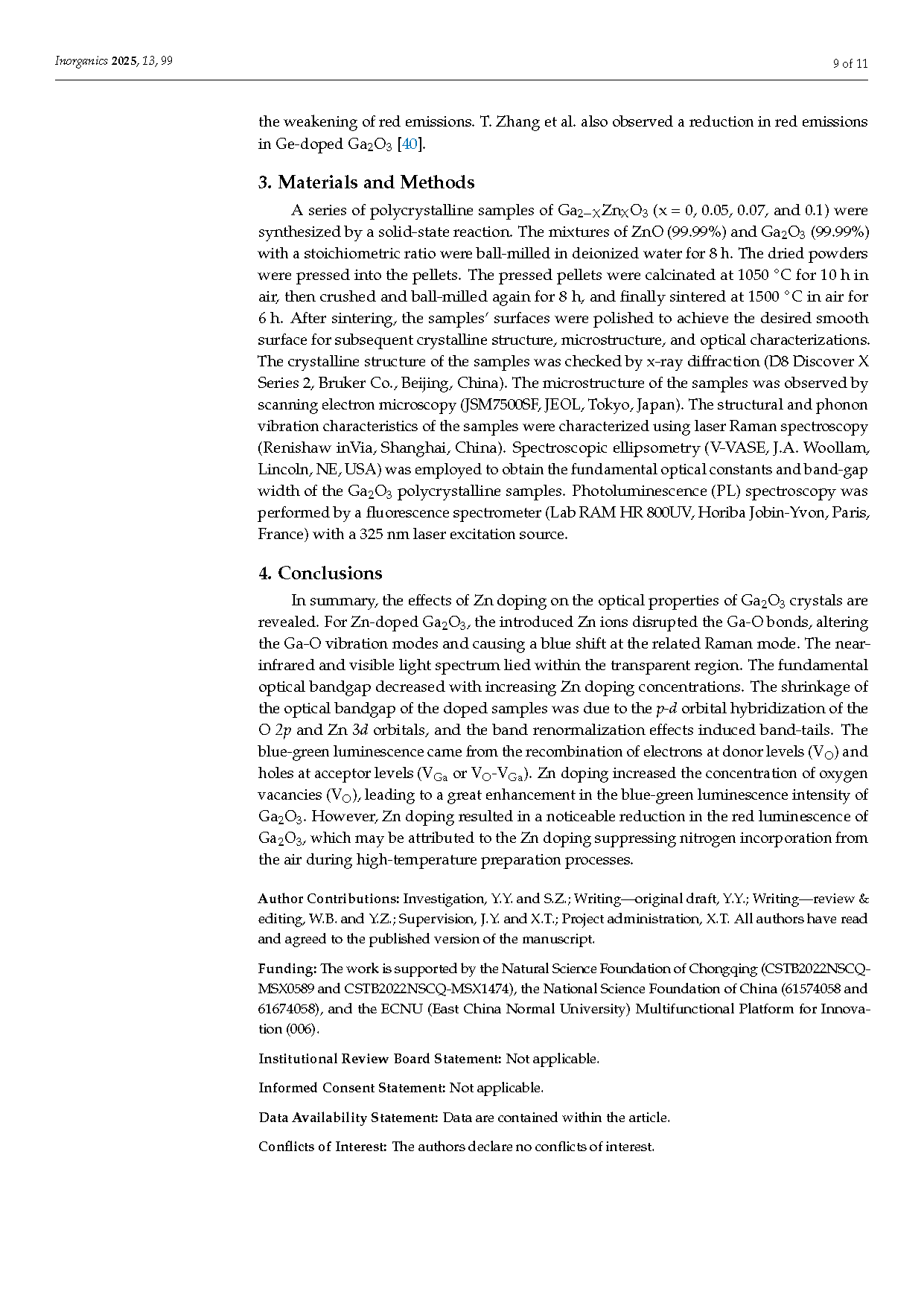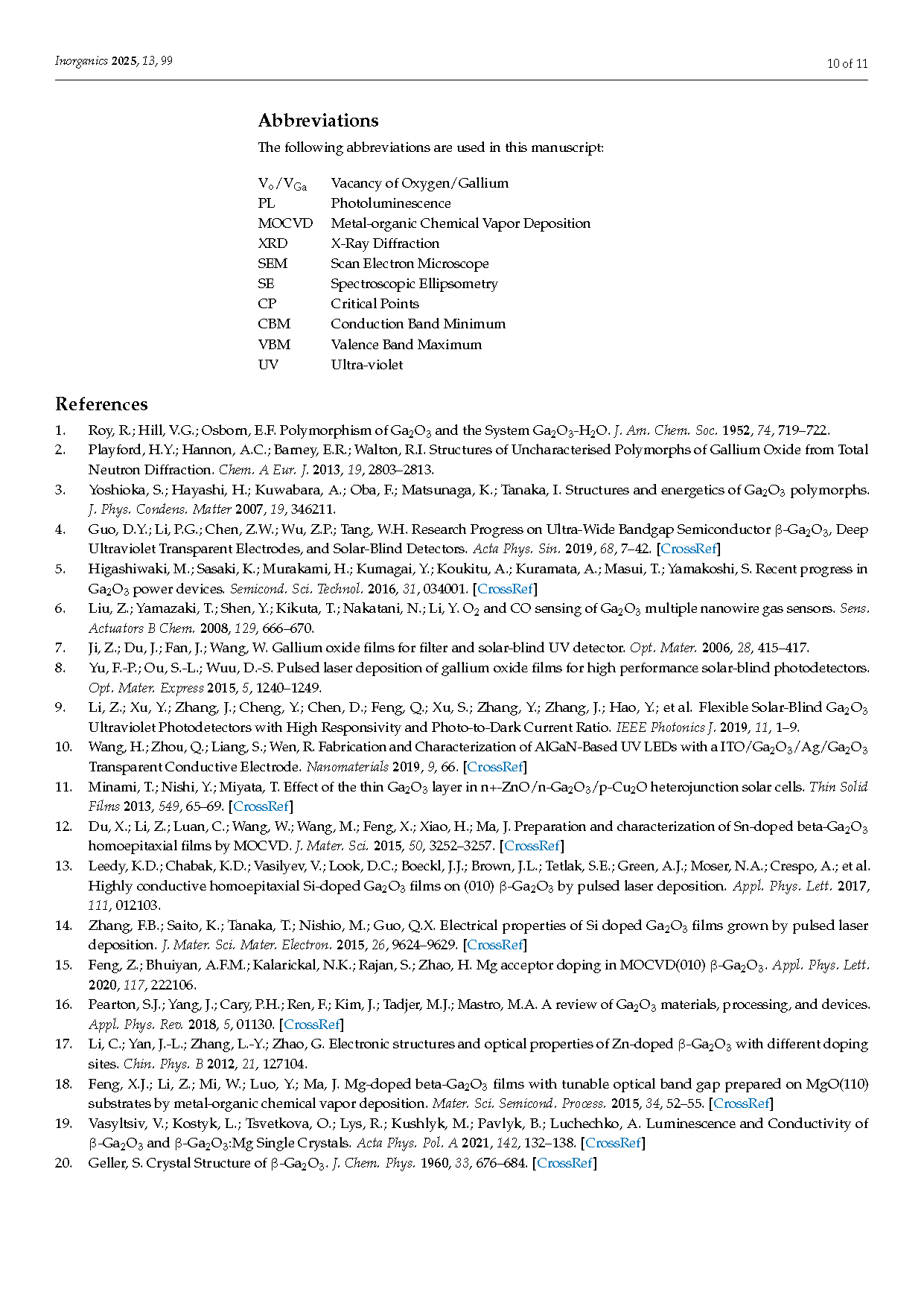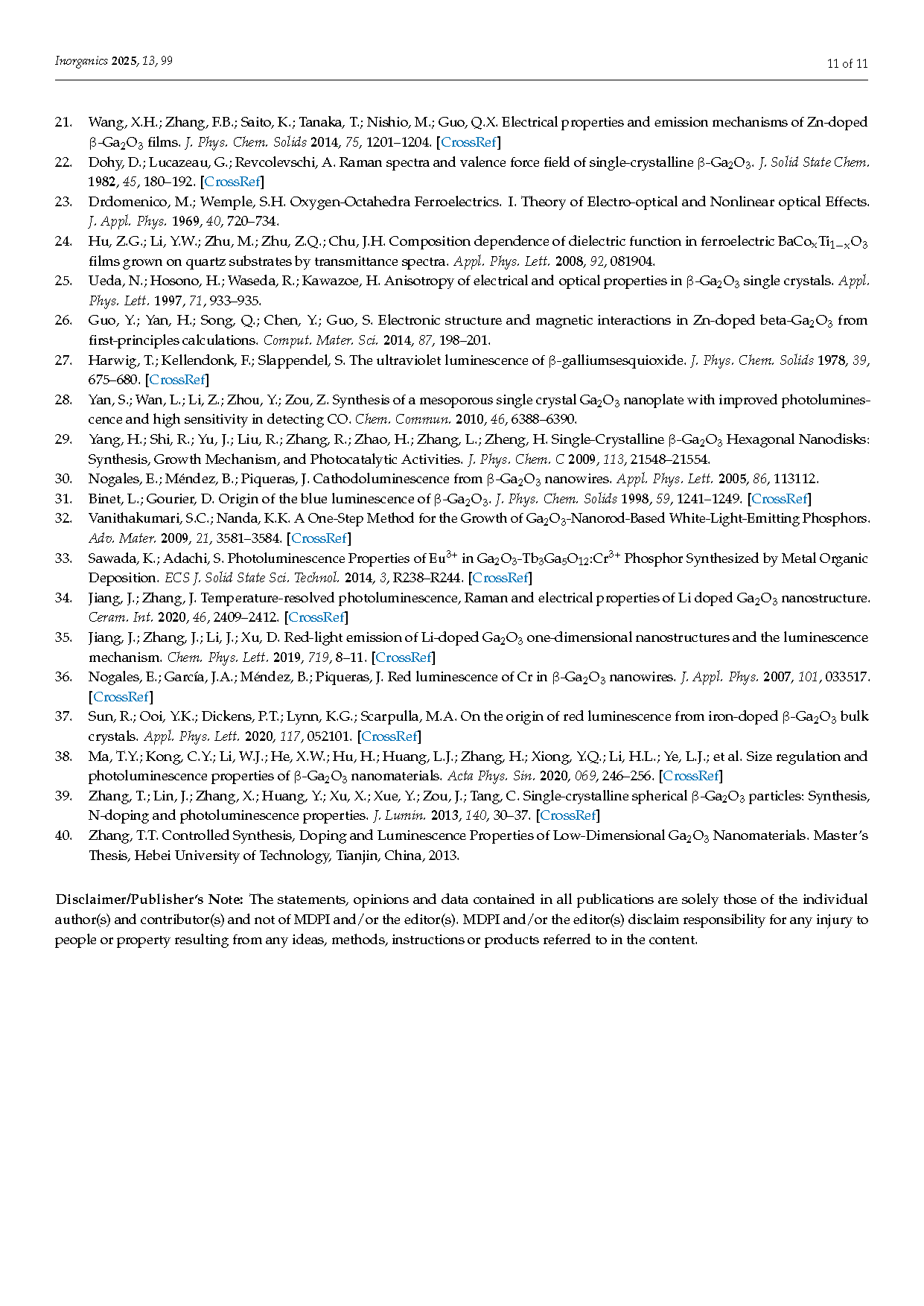

【Domestic Papers】Effects of Zn Doping on Optical Properties of Polycrystalline β-Ga₂O₃
日期:2025-04-03阅读:620
Researchers from the East China Normal University have published a dissertation titled " Effects of Zn Doping on Optical Properties of Polycrystalline β-Ga2O3" in Inorganics.
Project Support
The work is supported by the Natural Science Foundation of Chongqing (CSTB2022NSCQMSX0589 and CSTB2022NSCQ-MSX1474), the National Science Foundation of China (61574058 and 61674058), and the ECNU (East China Normal University) Multifunctional Platform for Innovation (006).
Background
With the continuous advancement of semiconductor technology, traditional semiconductors face limitations in high-frequency, high-power applications due to their narrow bandgap and low breakdown voltage. As a result, wide-bandgap materials such as GaN, SiC, and Ga2O3 have gained attention. Among them, monoclinic β-Ga2O3 (bandgap ~4.9 eV) offers high breakdown field strength, good transparency in the visible and near-UV regions, and excellent chemical stability, making it a promising candidate for applications in high-power electronics, gas sensors, solar-blind photodetectors, Schottky diodes, and transparent electrodes.
Doping is a key strategy for optimizing Ga2O3 properties. While n-type doping (e.g., with Sn or Si) has been successfully demonstrated, p-type doping remains challenging due to intrinsic defects such as Ga vacancies (VGa) and Ga-O vacancy pairs (VGa-VO), which introduce deep acceptor levels. However, Zn doping has been theoretically predicted to induce p-type behavior in Ga2O3. Despite previous research on single-crystal and thin-film Ga2O3, studies on polycrystalline Ga2O3 remain limited, even though it offers advantages such as low cost and easy fabrication.
This study investigates the effects of Zn doping on the optical properties of polycrystalline β-Ga2O3, focusing on its impact on crystal structure, phonon vibrations, bandgap, and photoluminescence (PL) behavior.
Abstract
In this study, Zn-doped Ga2O3 polycrystalline samples were prepared by solid-phase sintering, and the effects of Zn doping on the optical properties of Ga2O3 were investigated. It is found that the introduced Zn ions disrupted the Ga-O bonds and formed ZnGa, altering the Ga-O vibration modes and causing a blue shift in the related Raman mode. From near-infrared to visible light-range was a transparent region for Zn-doped Ga2O3. The fundamental optical bandgap underwent a decrease with increasing Zn doping content, primarily due to the p-d orbital hybridization of the O 2p and Zn 3d orbitals causing an upward shift valence band maximum and band renormalization effect-induced band-tails. The recombination of electrons at donor levels (VO) and holes at acceptor levels (VGa or VO-VGa) gave rise to blue-green luminescence. Zn doping increased the concentration oxygen vacancies (VO), resulting in significant blue-green luminescence enhancement in Zn-doped Ga2O3. Additionally, Zn doping resulted in a noticeable reduction in the red luminescence of Ga2O3, which may be attributed to Zn doping suppressing nitrogen incorporation from the air during high-temperature preparation processes.
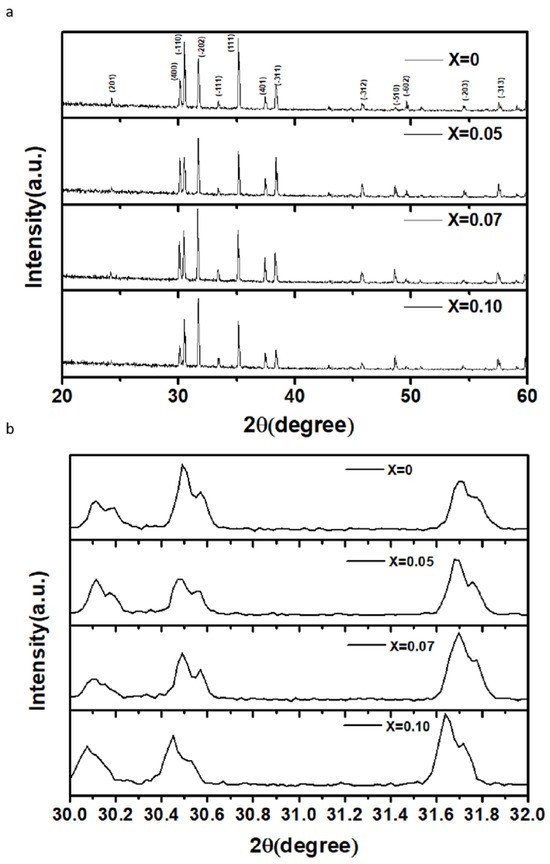
Figure 1. (a). The XRD patterns of Zn−doped Ga2O3 with different doping concentrations (Ga2−XZnXO3, x = 0, 0.05, 0.07, and 0.1), (b). The partially magnified XRD patterns of Zn−doped Ga2O3 with different doping concentrations (Ga2−XZnXO3, x = 0, 0.05, 0.07, and 0.1).
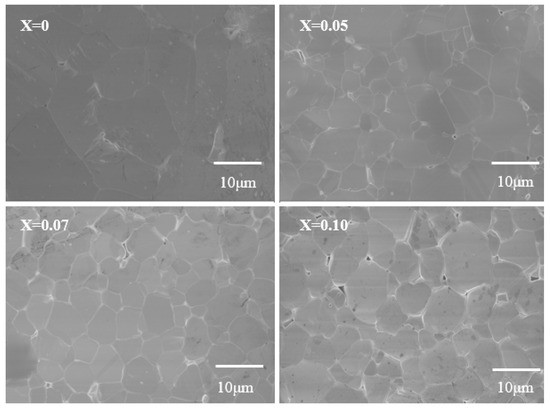
Figure 2. SEM Images of Zn-doped Ga2O3 of different doping concentrations (Ga2−XZnXO3, x = 0, 0.05, 0.07, and 0.1).
DOI:
doi.org/10.3390/inorganics13040099
